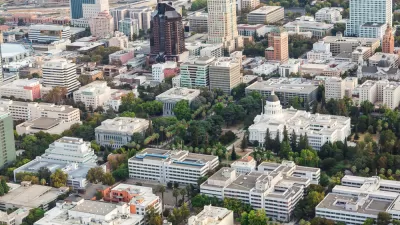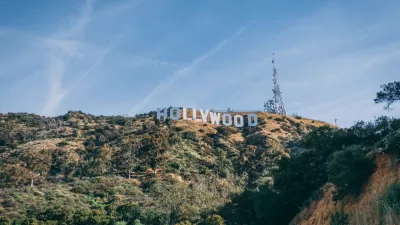The latest demographic data released Friday by the state's demographic unit shows shows an increase of 0.54 percent, one of the lowest on record, as birth rates drop, death rates increase, and more people leave the state than arrive from others.

A report [pdf] released Friday by the Demographic Research Unit of the California Department of Finance shows that California's population growth dropped to one of its lowest rates, 0.54 percent, for the period from July 1, 2017 to July 1, 2018. The state added 215,000 people to total 39.8 million, still shy of the 40 million figure that it had been projected to reach this summer.
Discrepancy with Census data
The Census Bureau also released data on Friday for the same period showing a national growth rate of 0.62 percent, an 80-year low. However, the Census Bureau uses different methods to collect their data, so their findings differ significantly
The Census reported California's population increase as 157,696 to total 39,399,349, a growth rate of 0.40 percent, meaning California's growth rate was more than 35 percent slower than the national average.
State data found:
Sticking with state, as opposed to Census, data, the demographic unit's May 1 report [pdf] for calendar year 2017 (posted here) showed a growth of 0.78 percent and a "0.86-percent annualized growth rate since the 2010 Census."
Even more than usual, growth was driven largely by natural increase. Births minus deaths accounted for 90.2 percent of the growth, or 194,000 new residents.
Birth rates declined at faster pace than previous years and reached their third lowest level since the beginning of the state vital statistics registration system in 1905. As the baby boomer generation advances towards retirement ages, the death rate has slowly increased.
Two years ago the demographic unit reported that the birth rate had dropped to its lowest in history, but the growth rate was 0.75 percent, compared to 0.54 percent this year.
Net migration, which includes domestic and international movement of both legal and unauthorized residents, added 21,000 people, accounting for less than 10 percent of the growth.
A Legislative Analyst's Office report released Feb. 21, analyzing only domestic migration, found that more Californians moved to other states than arrived here from other states every year since 1990. What's kept net migration a positive number is the net movement of people to the state from other countries, but that could slow due to the Trump administration's reversal of U.S. immigration policies.
Additional signs of slowing population growth could be seen from the large number of counties losing residents. Among the states 58 counties:
- Fourteen posted population losses from -0.04 percent in Calaveras to -0.51 percent in Napa, which lost residents, along with Sonoma, due to the Northern California wildfires.
- Although natural increase was the population driver, 17 counties experienced natural decreases, including Del Norte and Amador, which saw population gains due to increases in prison populations.
The counties with the largest numeric growth were largely in Southern California, led by Riverside, San Diego, Los Angeles, San Bernardino and Sacramento, while Central Valley counties saw the largest rates of increase.
Is shrinkage in California's future?
The slowing growth rate supports a column last summer by Joe Mathews of Zócalo Public Square who surmised "that our era of population growth is nearly over — and that shrinkage could be our future," and by Los Angeles Times political columnist, George Skelton, who warned last January that California may lose a Congressional seat after the 2020 census, although he attributed that possibility to the "citizenship question" on the Census.
Additional reading:
- Los Angeles Times, Dec. 21.: "Who moves to California? The wealthier and better educated, mostly." Based on 2018 Census data and 2017 California Dept. of Finance data.
- AP, Dec. 21: "California adds 215,000 people, inches toward 40 million." Based on 2018 state data.
FULL STORY: California’s Population Increases by 215,000, Continuing State’s Moderate Growth Rate [pdf]

Maui's Vacation Rental Debate Turns Ugly
Verbal attacks, misinformation campaigns and fistfights plague a high-stakes debate to convert thousands of vacation rentals into long-term housing.

Planetizen Federal Action Tracker
A weekly monitor of how Trump’s orders and actions are impacting planners and planning in America.

San Francisco Suspends Traffic Calming Amidst Record Deaths
Citing “a challenging fiscal landscape,” the city will cease the program on the heels of 42 traffic deaths, including 24 pedestrians.

Defunct Pittsburgh Power Plant to Become Residential Tower
A decommissioned steam heat plant will be redeveloped into almost 100 affordable housing units.

Trump Prompts Restructuring of Transportation Research Board in “Unprecedented Overreach”
The TRB has eliminated more than half of its committees including those focused on climate, equity, and cities.

Amtrak Rolls Out New Orleans to Alabama “Mardi Gras” Train
The new service will operate morning and evening departures between Mobile and New Orleans.
Urban Design for Planners 1: Software Tools
This six-course series explores essential urban design concepts using open source software and equips planners with the tools they need to participate fully in the urban design process.
Planning for Universal Design
Learn the tools for implementing Universal Design in planning regulations.
Heyer Gruel & Associates PA
JM Goldson LLC
Custer County Colorado
City of Camden Redevelopment Agency
City of Astoria
Transportation Research & Education Center (TREC) at Portland State University
Jefferson Parish Government
Camden Redevelopment Agency
City of Claremont




























